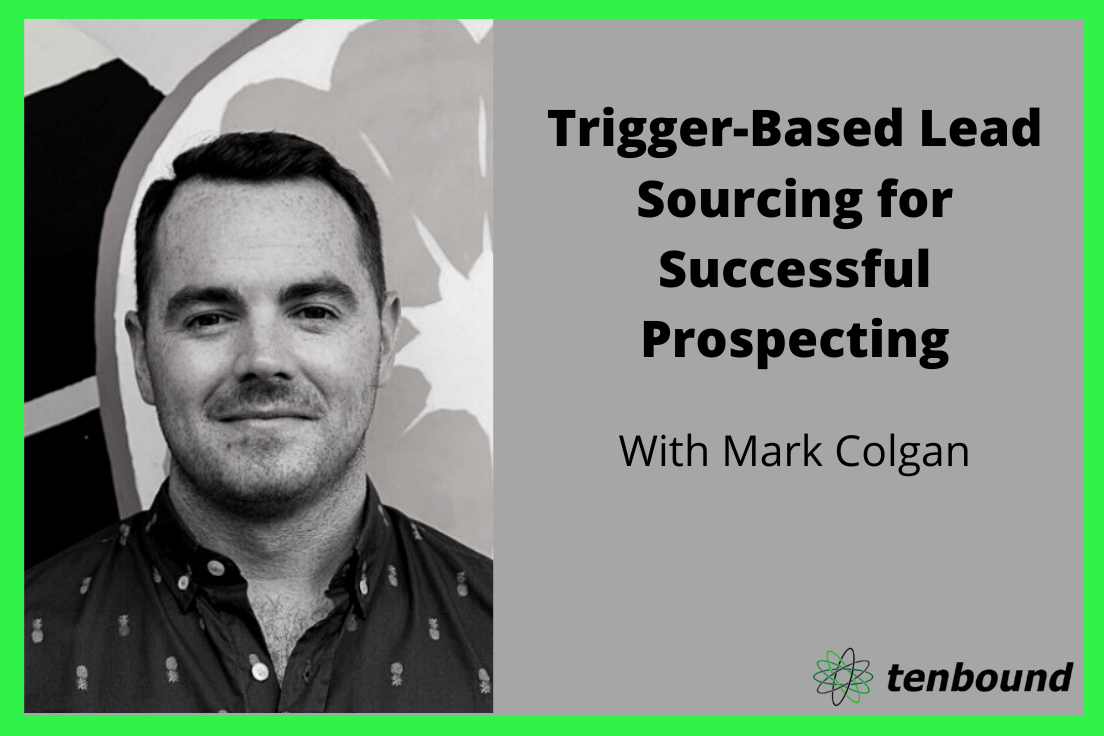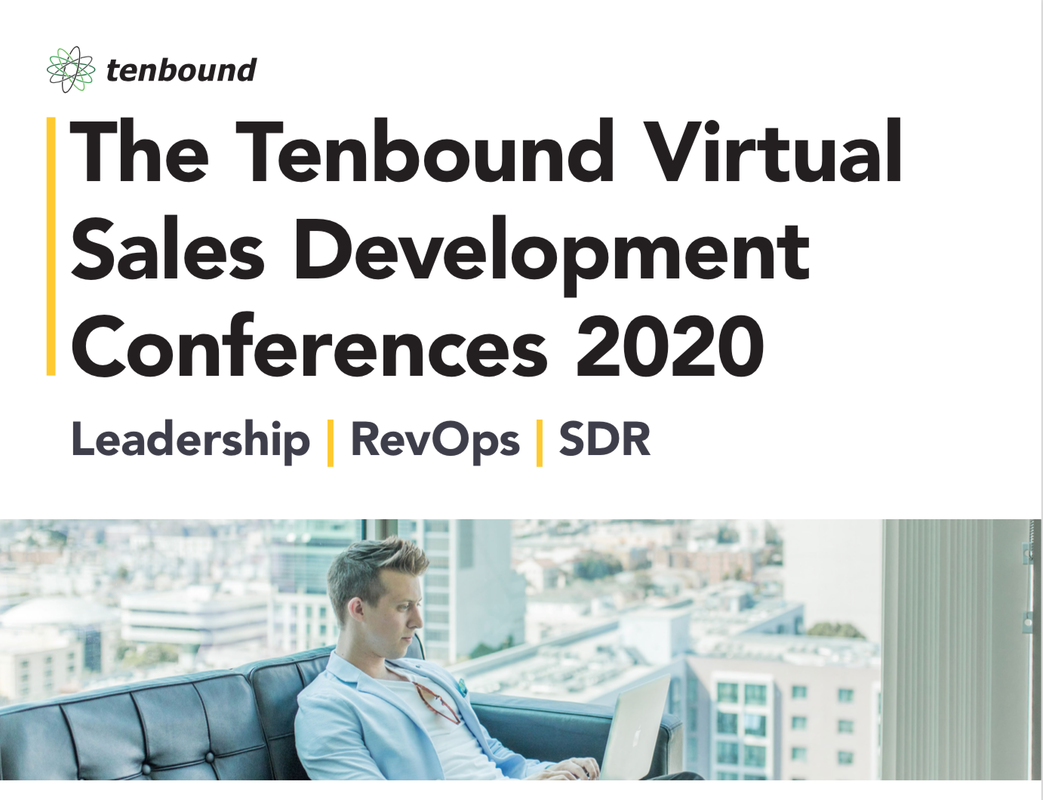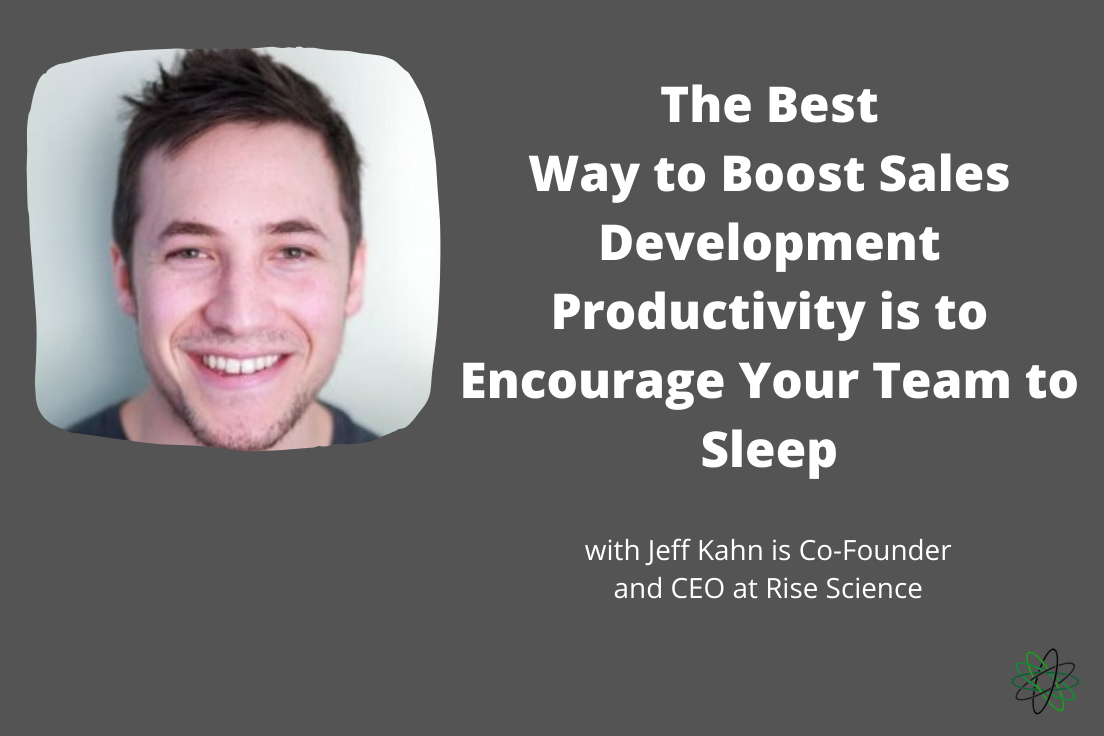Trigger-Based Lead Sourcing for Successful Prospecting
5/20/2020
Comments
Most of us are aware that the buyer’s journey has changed dramatically in the last few years (and months given the global pandemic).
This is supported by a CEB (acquired by Gartner) report in 2016 that shared “buyers on average are 57% of the way through their buying journey before even reaching out to a vendor”. Fast forward a few years since that report, the explosion of Inbound Marketing, and the development of buyer journey optimized content I would argue that it is probably closer to 90%. That is, buyers have almost all the information they need to make an informed purchasing decision. In 2007 Chet Homes shared the statistic that only 3% of any market is in the “buying mode” now. This means that 97% of prospects aren’t actively looking to purchase a product or service. The Tenbound Virtual Sales Development Conference is the only full day live Virtual conference 100% dedicated and focused Sales Development!
Taking place on June 18th 2020 from 8:00am - 2:00pm PT, all sessions are led by the real Sales Development practitioners and the Tenbound team, who will share the most recent strategies, tactics and playbooks you use today to hit your Sales Development goals in this new reality. This is a must attend virtual event. All sessions are streamed live and will be recorded for registered attendees to watch after the event ends via tenbound.com. This one day event is focused on the latest trends in Sales Development. Register now as session rooms are limited to the first 500 attendees who join the broadcast. If you are unable to join the session you will still be able to access the slide deck and session recording post-event. The Tenbound Virtual Conference experience also includes amazing networking and learning opportunities. When you register you will be automatically added to the event community and able to connect 1:1 directly with other attendees, Tenbound Market Map tool providers and the Tenbound team! What sales development leaders need to know about the connection between sleep and productivity and how to get more of both.
Even before the uncertainties of the COVID-19 pandemic, Americans were underslept. A large body of research shows we were quite unproductive as a result. During the current crisis, we face even more threats to both sleep and productivity: anxieties keep us up at night, while distractions working from home, burnout from a lack of boundaries between our professional and personal lives, and the cognitive overload of Zoom all curb our focus. Now, more than ever, it's imperative to understand the connection between sleep and productivity and invest in your team's rest. You might be wondering what a marketer knows about cold calls, and the answer is “Quite a bit!” I sit with my SDR team, when we’re not working remotely, so I hear their cold calls and pitches all day every day, which gives me insight into what’s working for them and what doesn’t based on the rest of the conversation.
There’s nothing more important for an SDR / BDR than the first words that come out of their mouth, and that especially holds true for an agent-assisted call, where the potential customer has been passed from the agent to the sales rep for the pitch and you have just a few seconds to gain and hold their attention. So, what should you say and what should you NOT say? |
Blog Archives
November 2023
September 2023
December 2022
November 2022
October 2022
September 2022
August 2022
July 2022
June 2022
May 2022
February 2022
January 2022
December 2021
November 2021
October 2021
September 2021
July 2021
June 2021
May 2021
February 2021
January 2021
October 2020
September 2020
June 2020
May 2020
April 2020
March 2020
January 2020
December 2019
November 2019
September 2019
August 2019
June 2019
May 2019
March 2019
February 2019
November 2018
October 2018
July 2018
April 2018
March 2018
February 2018
November 2017
October 2017
September 2017
June 2017
May 2017
April 2017
March 2017
February 2017
January 2017
September 2016
August 2016
May 2016
September 2015
March 2015
February 2015
January 2015
Categories
All
Book
Boost Sales
Career
Coaching
Cold Calling
Communities
Conference
COVID-19
Infographic
Job
Leaders
Leads
Management
Market
Outsourcing
Pandemic
Podcast
Psychographics
Sales Development
SDR
Seminar
Social Media
Team
Technology
Trade Shows
Training
Trends
|





